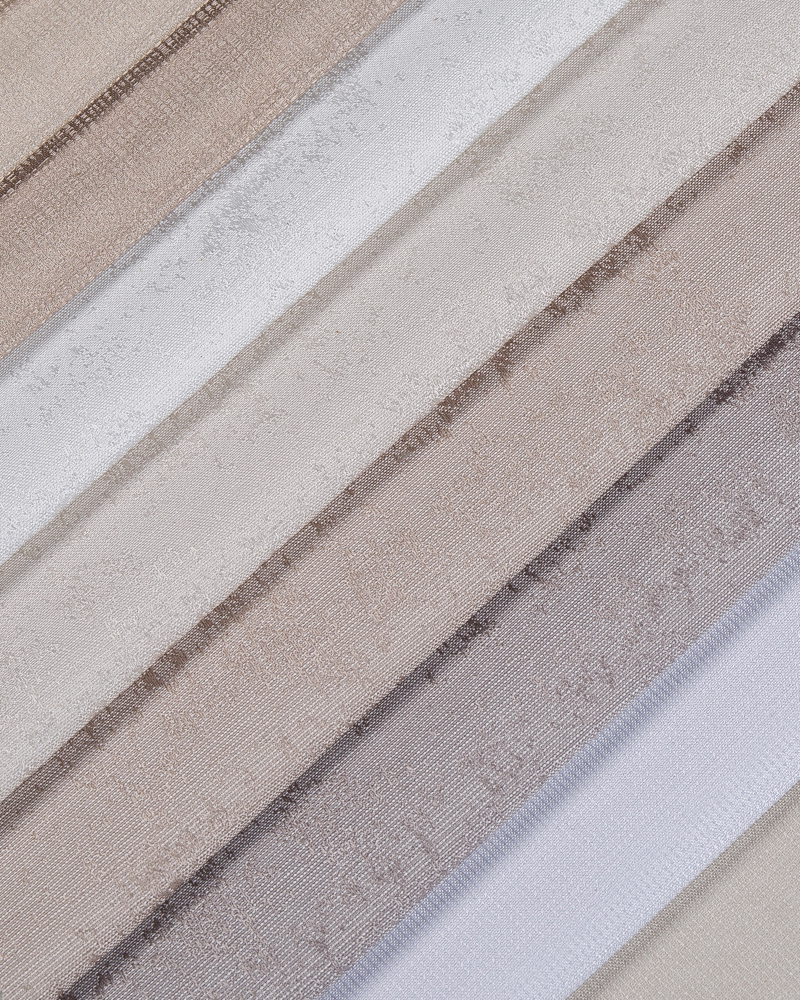
The application of jacquard weaving technology in jacquard blackout curtains fabric can effectively improve its shading effect. Jacquard weaving is a complex weaving process that forms three-dimensional, delicate textures and patterns on the surface of the fabric by controlling the weaving method of each warp and weft yarn. This process plays a role in optimizing density, layering, thickness and aesthetics in blackout curtains, thereby improving the shading performance of the fabric. The following are several key aspects of jacquard weaving technology to improve the shading effect:
Jacquard weaving technology can flexibly control the density and thickness of the fabric, and increase the yarn density of the blackout fabric through a multi-layer weaving structure (such as a double or triple fabric structure), making it difficult for light to penetrate the fabric. The multi-layer structure can not only block external light sources more effectively, but also achieve a balance between shading and breathability through the combination of inner and outer yarns. At the same time, through density control and reasonable fiber selection, the thickness of the fabric can be increased, further improving the shading effect.
Jacquard weaving can form rich three-dimensional textures and patterns on the surface of the fabric, so that light is reflected, refracted and scattered when passing through these textures, thereby reducing the possibility of light penetrating the fabric. The fine pattern design can make the yarns in different parts more closely arranged, which helps to disperse the energy of light and make it difficult to penetrate. In addition, the complex texture design can also add decorativeness to the curtains, making the curtains beautiful and textured while maintaining the shading performance.

Jacquard weaving technology can use different types of yarns for blending or interlacing, and further enhance the shading effect through reasonable material selection. Blackout curtain fabrics often use fibers with high opacity, such as polyester (polyester fiber) or other chemical fibers, which have strong shading ability. By alternately weaving these opaque yarns with other yarns, jacquard weaving can enhance the shading performance while maintaining flexibility. At the same time, the combination of different yarns can optimize breathability and softness, making the curtains comfortable to the touch while shading.
Jacquard blackout fabrics can also be combined with special coating technology to further enhance the shading effect. For example, fiber materials suitable for subsequent coating treatment can be selected during the weaving process, and sunscreen or light-shielding coatings can be added to the surface of the fabric after it is woven. These coatings can improve the light-shielding effect, prevent light transmission, and provide additional functions of UV protection. In addition, the coating process can enhance the anti-aging and weather resistance of the fabric, making the curtain more durable outdoors or in strong light environments, thereby extending the service life of the fabric.
Jacquard weaving technology plays an important role in improving the shading effect of Jacquard blackout curtains fabric. Through the weaving of multi-layer structure, shading assistance of three-dimensional texture, optimal selection of yarn materials, combined with coating technology, adjustment of weaving density and thickness, design of dark patterns, and increase of heat insulation function, jacquard blackout curtain fabrics can not only achieve ideal shading effects, but also have both aesthetics and versatility. This makes jacquard blackout curtain fabrics widely used in various scenes such as residential and commercial offices, which not only meets daily shading needs but also enhances the decorative effect.